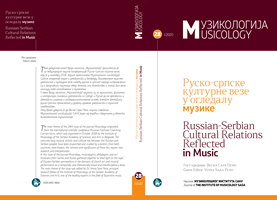William Byrd and the Limits of Formal Music Analysis
William Byrd and the Limits of Formal Music Analysis
Author(s): Žarko CvejićSubject(s): Cultural history, Music, Social history, Sociology of Art, Sociology of Religion, History of Art
Published by: Muzikološki institut SANU
Keywords: William Byrd; music analysis; Joseph Kerman; Catholic Renaissance music; motet; Anglican Reformation; Elizabethan England;
Summary/Abstract: Writing in 1962, Joseph Kerman was the first to speculate about potentially subversive political meanings in the Cantiones sacrae of the English Renaissance composer William Byrd, his two collections of motets published in 1589 and 1591, “voicing prayers, exhortations, and protests on behalf of the English Catholic community”. Subsequent research has corroborated Kerman’s speculations, showing that many of the texts Byrd set indeed feature the same politically charged metaphors that English Jesuit missionaries used to describe the predicament of Catholics living under the Protestant regime of Queen Elizabeth I, as well as that Byrd maintained close ties with many of these missionaries. In our own time, however, those who have analysed these motets, including Kerman, have paid little attention to this, preferring formal(ist) analytical approaches to this body of music. Focusing on Ne irascaris Domine, one of Byrd’s most famous “political” motets, and the only two major analytical responses to it, this article attempts to demonstrate the limitations of formalist music analysis when applied to Renaissance sacred music.
Journal: Muzikologija
- Issue Year: 1/2020
- Issue No: 28
- Page Range: 149-158
- Page Count: 10
- Language: English

